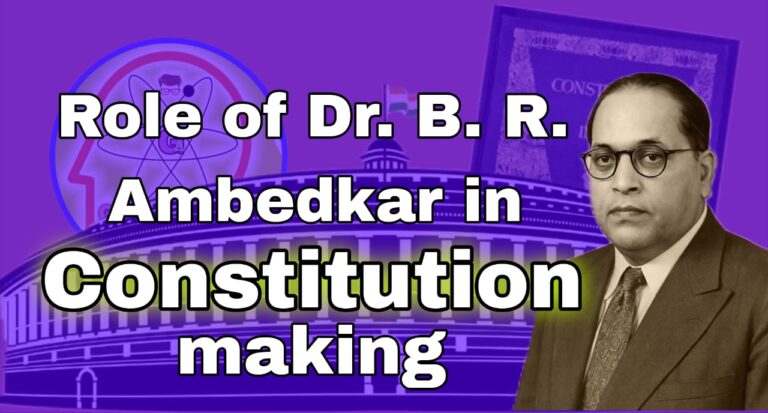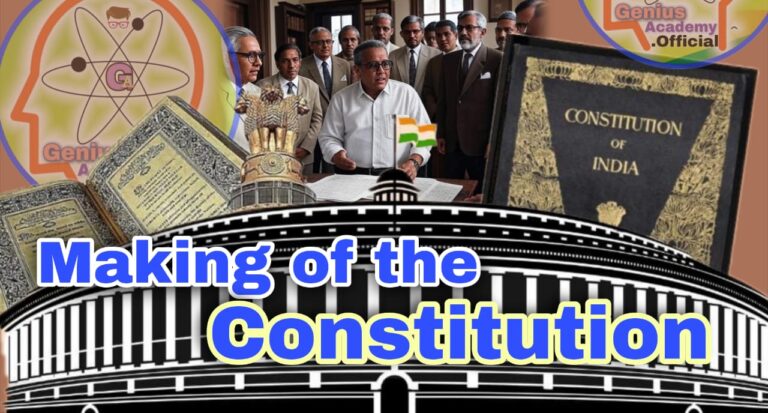PM Modi Inaugurates the International Global Cooperative Conference
Introduction
Prime Minister Narendra Modi inaugurated the first International Global Cooperative Conference in New Delhi, marking a significant step in promoting cooperative movements globally. The event also launched the United Nations International Year of Cooperatives 2025, reaffirming India’s role as a key player in the cooperative sector.
The event was hosted by the Indian Farmers Fertiliser Cooperative Limited (IFFCO) in collaboration with the International Cooperative Alliance (ICA), the Government of India, and major Indian cooperatives such as AMUL and KRIBHCO. This marked the first time in ICA’s 130-year history that such a global cooperative conference was held in India.
About the International Cooperative Alliance (ICA)
Overview of ICA
- Established in 1895, the International Cooperative Alliance (ICA) is the apex body for the global cooperative movement.
- Its primary objective is to unite, represent, and serve cooperatives worldwide, promoting their economic, social, and cultural development.
- The theme of this conference, “Cooperatives Build Prosperity for All,” aligns closely with India’s vision of “Sahkar Se Samriddhi” (Prosperity through Cooperation).
Understanding Cooperatives
What Are Cooperatives?
A cooperative is a member-owned and democratically operated organization aimed at meeting shared economic, social, or cultural needs. Unlike for-profit entities, cooperatives prioritize member welfare over profits.
Key Features of Cooperatives:
- Democratic Decision-Making: One member, one vote.
- Member Economic Participation: Profits are distributed based on usage rather than capital investment.
- Community-Oriented: Cooperatives aim to benefit local communities by keeping resources and profits within the group.
Role in Sustainable Development
- The United Nations Sustainable Development Goals (SDGs) recognize cooperatives as vital for reducing inequality, promoting decent work, and eradicating poverty.
Constitutional Framework for Cooperatives in India
The 97th Constitutional Amendment Act, 2011
This amendment strengthened the legal foundation for cooperatives in India:
- Fundamental Right: Added the right to form cooperative societies under Article 19(1)(c).
- Directive Principle: Introduced Article 43-B, mandating state promotion of cooperative societies.
- Part IX-B: Incorporated detailed provisions for the governance and regulation of cooperative societies (Articles 243-ZH to 243-ZT).
Governance
- State Subject: Cooperatives are primarily governed by state laws.
- Multi-State Cooperative Societies Act, 2002: Regulates cooperatives operating across state boundaries.
Benefits of Cooperatives
Economic and Social Impact
- Democratic Control: Members actively participate in governance and decision-making.
- Economic Participation: Benefits like profit-sharing and better prices strengthen member welfare.
- Community Development: Cooperatives often focus on local needs, reducing economic disparities.
- Resilience to Crises: Cooperatives have proven effective in sustaining local economies during global crises, such as the COVID-19 pandemic.
Sectoral Benefits
1. Agriculture:
- Supports farmers through access to seeds, fertilizers, and fair market prices.
- Example: Amul Dairy Cooperative transformed India into a global leader in milk production.
2. Finance:
- Credit cooperatives provide affordable loans, especially in rural areas.
- Example: Cooperative banks in Kerala have supported inclusive financial growth.
3. Housing:
- Cooperative housing societies provide affordable urban housing.
4. Consumer Goods:
- Cooperative stores eliminate middlemen, offering products at reasonable prices.
Types of Cooperatives in India
1. Agricultural Cooperatives
- Dairy Cooperatives: e.g., Amul in Gujarat.
- Farmers’ Cooperatives: Provide resources like fertilizers, seeds, and machinery.
- Fishermen Cooperatives: Enable collective resource management and market access.
2. Credit Cooperatives
- Facilitate savings and offer loans in rural areas.
3. Worker Cooperatives
- Promote collective ownership and profit-sharing among workers.
4. Consumer Cooperatives
- Offer goods and services at fair prices through stores and fair-price shops.
5. Housing Cooperatives
- Help members build or manage housing projects.
Success Stories of Cooperatives in India
1. Amul (Gujarat)
- Transformation: Empowered millions of small-scale farmers and women.
- Impact: Revolutionized India’s dairy sector, leading to the White Revolution.
2. Kerala’s Cooperative Movement
- Key Sectors: Banking, consumer goods, and agriculture.
- Achievements: Statewide success in financial inclusion and rural development.
3. Irrigation Cooperatives in Maharashtra
- Focus: Efficient water resource management.
- Result: Improved agricultural productivity and sustainable practices.
Challenges Faced by Cooperatives in India
1. Weak Governance:
- Poor management and lack of transparency.
- Corruption and political interference.
2. Limited Financial Access:
- Many cooperatives struggle to secure adequate funding for operations or expansion.
3. Technological Backwardness:
- Lack of access to modern technology affects efficiency and competitiveness.
4. Competition from Private Sector:
- Increasing dominance of private players in agriculture, finance, and retail sectors.
5. Legislative and Regulatory Hurdles:
- State-specific laws lead to inconsistencies in governance across regions.
Government Initiatives to Promote Cooperatives
1. National Cooperative Policy (2002)
- Focused on strengthening governance, ensuring member participation, and promoting sustainability.
2. Multi-State Cooperative Societies Act, 2002
- Provides a robust framework for cooperatives operating in multiple states.
3. Ministry of Cooperation (2021)
- Established to streamline and support the cooperative movement in India.
4. Supportive Schemes
- IFFCO and KRIBHCO initiatives for farmers.
- Cooperative education and training programs.
International Year of Cooperatives 2025
Significance
- The United Nations declared 2025 as the International Year of Cooperatives, emphasizing their role in sustainable development.
- India’s hosting of the inaugural event underscores its leadership in the global cooperative movement.
Global Implications
- Aligning cooperative goals with international frameworks like the UN SDGs.
- Encouraging knowledge-sharing and capacity building among nations.
Way Forward
Strengthening Governance
- Enhancing transparency and accountability.
- Reducing political interference.
Leveraging Technology
- Digitizing operations for greater efficiency.
- Providing technological support to rural cooperatives.
Access to Finance
- Increasing credit facilities for cooperatives.
- Promoting financial literacy among cooperative members.
Capacity Building
- Training cooperative leaders and members in modern management practices.
Policy Support
- Developing a unified national framework for cooperative governance.
- Strengthening the role of the Ministry of Cooperation.
Public Awareness
- Highlighting the contributions of cooperatives to society.
- Encouraging youth participation in cooperative initiatives.
Conclusion
The inauguration of the International Global Cooperative Conference and the launch of the UN International Year of Cooperatives 2025 reflect India’s growing influence in the cooperative movement. With their unique ability to combine economic viability and social welfare, cooperatives have emerged as essential drivers of inclusive growth. By addressing governance issues, improving access to technology and finance, and fostering global partnerships, India’s cooperative movement can set an example for sustainable development worldwide. Through initiatives like “Sahkar Se Samriddhi,” India is poised to lead a new era of cooperative-driven prosperity.
#ICA
Daily Mains Practice Questions
UPSC (CSE) Mains Questions Based on the International Global Cooperative Conference
GS Paper 1: Society
| [Q1.] Discuss how cooperatives can empower marginalized communities and strengthen social equity in India. (250 words) |
| [Q2.] Analyze the contribution of the cooperative movement in bridging socio-economic disparities in rural India. (250 words) |
GS Paper 2: Polity and Governance
| [Q3.] Discuss the significance of the 97th Constitutional Amendment in strengthening the cooperative movement in India. (250 words) |
| [Q4.] Evaluate the role of cooperatives in achieving inclusive economic development and reducing regional inequalities in India. (250 words) |
| [Q5.] “Cooperatives are crucial to India’s vision of ‘Sahkar Se Samriddhi.’” Analyze the challenges and opportunities in realizing this vision. (250 words) |
| [Q6.] How do constitutional and legislative frameworks, including the Multi-State Cooperative Societies Act, impact the functioning of cooperatives in India? (250 words) |
GS Paper 3: Economy and Sustainable Development
| [Q7.] Critically examine the role of cooperatives in achieving the UN Sustainable Development Goals (SDGs). (250 words) |
| [Q8.] Explain the contribution of successful cooperatives like Amul and IFFCO in strengthening India’s rural economy and global image. (250 words) |
| [Q9.] Discuss the potential of cooperatives as a tool for poverty alleviation, financial inclusion, and employment generation in rural India. (250 words) |
| [Q10.] Evaluate the challenges posed by governance issues, technological gaps, and private sector competition in the cooperative sector. (250 words) |
FAQs on the International Global Cooperative Conference
1. What is the significance of hosting the ICA Global Cooperative Conference in India?
Answer:—
- Hosting the conference highlights India’s leadership in the global cooperative movement.
- It reflects the growing recognition of India’s successful cooperatives like Amul and IFFCO as models for sustainable development.
- The event emphasizes the role of cooperatives in achieving economic equity and social prosperity.
2. How does the 97th Constitutional Amendment strengthen cooperatives in India?
Answer:—
- The amendment elevated the right to form cooperative societies as a Fundamental Right under Article 19.
- It added Article 43-B, urging the state to promote voluntary formation, autonomous functioning, and professional management of cooperatives.
- It introduced Part IX-B, ensuring democratic governance and accountability in cooperative societies.
3. What are the major benefits of cooperatives?
Answer:—
- Democratic Control: Members participate equally in decision-making.
- Economic Participation: Profits are shared based on member usage, promoting inclusivity.
- Local Development: Cooperatives boost community-focused initiatives, reducing reliance on external entities.
4. What are the challenges faced by cooperatives in India?
Answer:—
- Governance Issues: Political interference and mismanagement.
- Lack of Financing: Limited access to credit affects operational capacity.
- Technological Deficiencies: Many cooperatives lag in adopting modern tools and practices.
- Private Sector Competition: Increasing dominance of private players in agriculture and retail sectors.
5. How do cooperatives contribute to achieving the UN Sustainable Development Goals (SDGs)?
Answer:—
- Poverty Alleviation: By pooling resources and promoting self-reliance.
- Reduced Inequalities: By empowering marginalized communities.
- Decent Work: Through employment generation and fair wages in rural areas.
6. What reforms are needed to strengthen cooperatives in India?
Answer:—
- Enhanced governance and transparency to minimize corruption.
- Greater financial access and partnerships with banks.
- Adoption of modern technology for efficiency and competitiveness.
- Public awareness campaigns to highlight the benefits of cooperatives.
7. What is the significance of cooperatives in rural development?
Answer:—
- Cooperatives facilitate access to resources like fertilizers, credit, and markets for farmers.
- They empower local communities, enabling better living standards and economic self-reliance.
8. What is the role of the Ministry of Cooperation?
Answer:—
- Established in 2021, the Ministry focuses on reforming governance structures, ensuring financial sustainability, and enhancing the operational efficiency of cooperatives.





